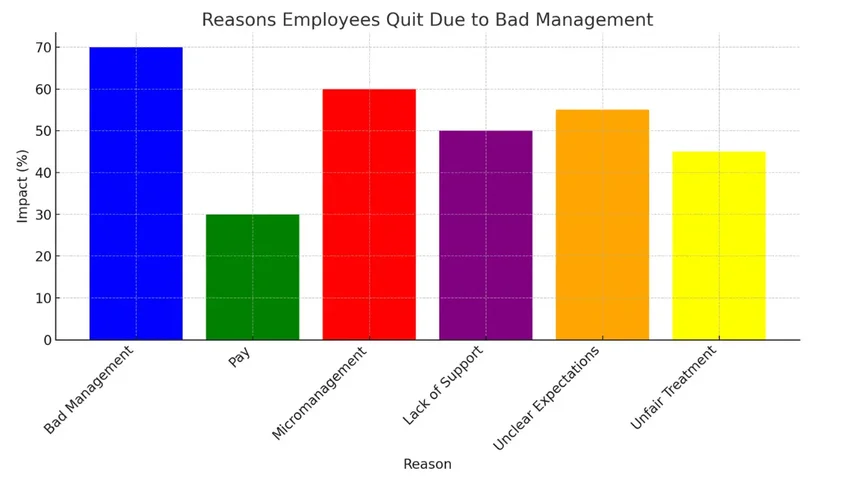Let’s face it, in the online world we live in, what people think about a CEO can really make or break the company’s image.
Think about it. With everyone glued to their screens and social media buzzing non-stop, a CEO’s every move is watched like a hawk.
This means keeping a good rep isn’t just nice to have; it’s absolutely essential.
Why?
Having a strong online presence can be extremely beneficial for your brand. It can attract top talent, increase sales, and enhance your image.
On the flip side, if the internet starts buzzing for the wrong reasons, trust takes a hit, hiring gets hard, and before you know it, your profits could start to dip.
Now, managing a CEO’s reputation isn’t just about dodging bad news. It’s about crafting the kind of image you want the world to see, making sure employees, customers, and big players think highly of you.
In this guide, we’re diving deep into the nitty-gritty of why keeping a CEO’s reputation spotless matters, laying out the top strategies to keep your online image polished, and sharing some solid tips on how to bounce back if things get a little rocky.
Benefits of CEO Reputation Management
Anyone with internet access can have their say about your business and its leaders. This spotlight on CEOs means your personal brand is pretty much one and the same with your company’s brand.
Indeed, a whopping 86% of Americans now say that it’s more critical than ever for companies to be open and clear.
Also, a study by Weber Shandwick reveals that when a company has a CEO who’s active on social media and leads with transparency, 86% of top executives see that leader as truly “open and honest.”

A top-notch reputation can open doors to new deals, win over investors, and keep customers coming back for more.
In fact, research shows that a big chunk of what your company is worth comes down to how people see you as the CEO. That’s right, your vibe has a real effect on your company’s success.
But here’s the thing: news about you can quickly get tangled up with news about your company, influencing not just what people outside think but also how your team feels on the inside.
There’s a survey out there showing that a lot of workers in the U.S. would think twice about joining a company if there’s bad chatter about the boss.

This goes to show, keeping a clean image isn’t just about looking good — it’s about keeping everyone, from your team to your customers, believing in what you do.
Online Reputation Management Tactics
Managing a CEO’s online reputation requires a strategic approach. Controlling the online narrative starts with optimizing content across platforms to highlight leadership, expertise, and achievements. This includes publishing thought leadership insights, securing backlinks from authoritative sites, and ensuring positive press ranks higher in search results.
Identifying risks early is crucial. Sentiment analysis tools monitor brand mentions, detecting potential online reputation attacks before they escalate. If negative content appears, a reputation repair strategy involves addressing concerns through professional crisis communication and, when necessary, defamation removal to eliminate false claims.
A CEO’s digital brand is strengthened by consistent social media management. Engaging with followers, responding to criticism with a clear social media response plan, and maintaining a strong online presence foster trust. Coordinating stakeholder communication ensures the company’s message is unified across all channels.
When managed effectively, online reputation tactics protect credibility and position CEOs as trusted industry leaders.
Strategies for Managing CEO Reputation
A CEO’s reputation can make or break a company. In today’s digital world, maintaining a strong public profile requires more than just good leadership—it demands a proactive online narrative and consistent engagement with stakeholders. A well-managed reputation builds trust with customers, investors, and employees.
One key strategy is establishing a strong online presence. A CEO should actively shape their personal brand through professional social media profiles and thought leadership content. Sharing insights on industry trends, company culture, and innovation helps reinforce credibility. A solid content strategy ensures regular updates that position the CEO as an industry leader.
Engaging with the audience is crucial. CEOs should interact with followers on LinkedIn and Twitter, respond to media inquiries, and participate in public discussions. CEO activism has become a growing trend, with leaders taking stances on social and environmental issues. However, it’s important to align public statements with company values to avoid backlash.
A crisis communication plan is essential for handling reputational risks. Unexpected events, from negative press to corporate missteps, can damage a CEO’s image. A prepared crisis management team ensures swift and transparent responses to protect the brand. Working with reputation management consultants can also help navigate sensitive situations and rebuild trust.
Maintaining a positive online reputation requires long-term effort. CEOs should monitor their digital footprint, address misinformation, and refine their message to stay relevant. Through strategic stakeholder engagement, social media presence, and carefully crafted content, leaders can strengthen their influence and build a lasting reputation.
It’s not just about putting out fires. Nope.
It’s about being ahead of the game, making smart moves, and keeping things real and positive.
Let me break it down for you with some great strategies every CEO needs to ace:
Stay Alert Online
First things first: keep an eye on what the internet says about you and your biz.
Use tools like Google Alerts to get the heads-up on any mentions.
This isn’t just about spotting the bad stuff; it’s about getting the full picture and seizing chances to boost your rep. Staying on top of this means you’re always ready to roll with the punches and highlight the good.
Team Talks
Remember, your vibe at work matters big time.
Chatting with your crew can work wonders for how they see you. Try to be more present, hop onto LinkedIn, and keep those lines of communication wide open.
Happy employees = happy brand image.
They’ll be your cheerleaders, spreading good vibes far and wide.
Social Media Savvy
Busy? Sure. But skipping out on social media? That’s a no-go.
A savvy social strategy lets you shape your story, share wins, and give your brand a friendly face.
Everlane really gets how important it is for big bosses to be active on social media. Michael Preysman, the CEO of Everlane, is all about being open and honest. He often shares posts on his own social media accounts. This is a smart move that really speaks to younger shoppers. He talks about stuff Everlane’s customers care about, like giving to the ACLU and what it’s like to be the CEO. It’s a great way for him to connect with people and share what Everlane stands for.
Today’s @Snapchat story will show you what it’s like to be our founder and CEO, @mpreysman. pic.twitter.com/7jh8tMU1Kd
— Everlane (@Everlane) November 21, 2014
Dive into LinkedIn, Twitter, Instagram – wherever your crowd hangs out. It’s your stage to connect and show the world what you and your company are all about.
Lead with Integrity
At the core of a stellar rep is being a leader who walks the talk.
Set the ethical bar high and be the example.
Transparency, accountability, and a solid moral compass not only earn respect but also build a foundation of trust.
Doing right by people doesn’t just feel good; it’s good for business and keeps your reputation on point.
Rolling with these strategies isn’t a one-off task. It’s about sticking to your guns, playing it straight, and always being in tune with your online presence.
Keep at it, and you’ll not only safeguard your rep as a CEO but also strengthen it, making you a leader people trust and admire.
Let’s make your online reputation bulletproof!
Steps to Address and Recover from a Reputation Crisis
A reputation crisis can hit anyone, from CEOs to small business owners. Whether it’s a viral controversy, a public mistake, or negative press, the key is to act quickly and strategically. Ignoring the problem only makes it worse. The faster you respond, the better your chances of controlling the narrative and rebuilding trust.

The first step is to acknowledge the issue. Staying silent can make you look guilty or indifferent. Even if you don’t have all the answers yet, a simple statement showing concern and commitment to a resolution can help. Transparency matters. People appreciate honesty over corporate jargon or vague responses.

Next, control the message. Don’t let rumors or misinformation take over. Use your own platforms—social media, your website, or direct communication with stakeholders—to clarify facts and share updates. This isn’t just about damage control; it’s about demonstrating accountability and showing that you care about public perception.
Engage with those affected. Whether it’s customers, employees, or the public, open communication is key. A personal, thoughtful response can help repair relationships. If needed, apologize sincerely and outline the steps you’re taking to fix the problem. A well-handled apology can actually strengthen trust rather than weaken it.
After addressing the crisis, take corrective action. Identify what went wrong and put measures in place to prevent it from happening again. These steps should be visible and measurable, whether it’s adjusting internal policies, improving training, or making operational changes. Let people know what you’re doing to improve—actions speak louder than words.
Finally, focus on rebuilding your brand. A reputation crisis doesn’t have to define your business. Shift the narrative by highlighting positive developments, new initiatives, or community contributions. Over time, consistent positive messaging will help push the crisis into the past, reinforcing your credibility and reliability.
A reputation crisis is tough, but it doesn’t have to be permanent. With a proactive approach, transparency, and a commitment to improvement, businesses and leaders can recover, rebuild, and come back even stronger.
Challenges in CEO Reputation Management
Managing a CEO’s reputation is more complex than ever. Negative reviews, social media backlash, and deepfakes can damage credibility overnight. A single negative news story can spiral into a full-blown reputation crisis, making consistency across channels essential. CEOs must respond quickly and professionally to criticism while staying true to their brand.
Time is another challenge. Leading a company leaves little room for monitoring online sentiment, responding to negative reviews, or crafting reputation management strategies. Many turn to a reputation management agency or management consultants for support. These experts use reputation management tools to track brand sentiment, detect reputation threats, and handle crisis response.
Navigating crises requires a proactive approach. A strong enterprise risk management plan helps CEOs prepare for potential damage before it happens. Addressing issues transparently, reinforcing trust, and maintaining a clear message across all platforms ensures long-term credibility. In today’s fast-moving digital world, CEOs who invest in reputation management strategies can better protect their image and their business.
Measuring and Monitoring CEO Reputation
A CEO’s reputation shapes how investors, employees, and the public perceive a company. Monitoring it helps ensure alignment with business goals while identifying areas for improvement. AI-powered tools make tracking real-time sentiment easier, providing insights into how a leader is perceived across platforms. Google Alerts and social media listening platforms help catch trends early, allowing companies to respond quickly to emerging narratives.
Reputation scoring is another critical method. It involves auditing and analyzing media coverage, stakeholder feedback, and online sentiment to gauge overall perception. Authenticity and transparency play a key role—CEOs who communicate openly and uphold a strong moral code tend to build trust more effectively.
Social media analytics provide deep insights into engagement and sentiment shifts, helping executives refine their personal brand. Media monitoring tools track how often a CEO is mentioned in news articles and whether the sentiment is positive or negative. For a more in-depth assessment, some companies turn to third-party reputation management services offering expert strategies for improving public perception.
Ultimately, a CEO’s reputation is not static—it requires constant attention. Leaders can maintain a strong and positive image in the business world by staying proactive, leveraging the right tools, and prioritizing credibility.
Impact of Executive Reputation Management on Company Reputation
Let’s talk about why it’s super important for the big boss of a company to have a good rep.
Think of it this way: when the CEO looks good, the company looks good.
We’re living in a time when everyone’s online, and what the CEO does or says can really make or break how people see their brand.
Why a CEO’s Good Name is Valuable
A CEO with a shining reputation is like a magnet.
It pulls in trust, gets people excited to invest, and keeps customers coming back for more.
When people think highly of the CEO, that positive vibe spreads across the whole company, boosting everything from sales to how easy it is to hire awesome people.
But Here’s the Catch
If folks start thinking poorly of the CEO, it’s bad news.
Sales could drop, the best and brightest might not want to join the team, and the company’s value could take a hit.
Since what the CEO says and does reflects on the company, staying positive and professional online is a must.
Sticking to a Solid Brand Image
For the magic to happen, CEOs and their companies need to be on the same page.
This means making sure that what the CEO stands for fits perfectly with what the company is all about. Keeping the message and values consistent helps everyone see the company as trustworthy and solid.
How to Keep that Reputation Clean
- Be Real: CEOs should talk about their vision and values in a way that feels true to them and connects with others.
- Get Out There: Showing up at events, being active on social media, and giving back are great ways for CEOs to show they’re leaders who care, making both them and their company look good.
- Listen Up: Paying attention to what people are saying and being open to change can really boost how much trust people have.
Wrapping Up
Taking care of how the CEO is seen is huge for businesses today. With everyone watching online, a CEO’s reputation greatly impacts everything from profits to how happy the team is and how the world sees the brand. By staying active, ethical, and in touch with what people are saying, CEOs can protect and even boost their reputation, and that’s a win for everyone.

